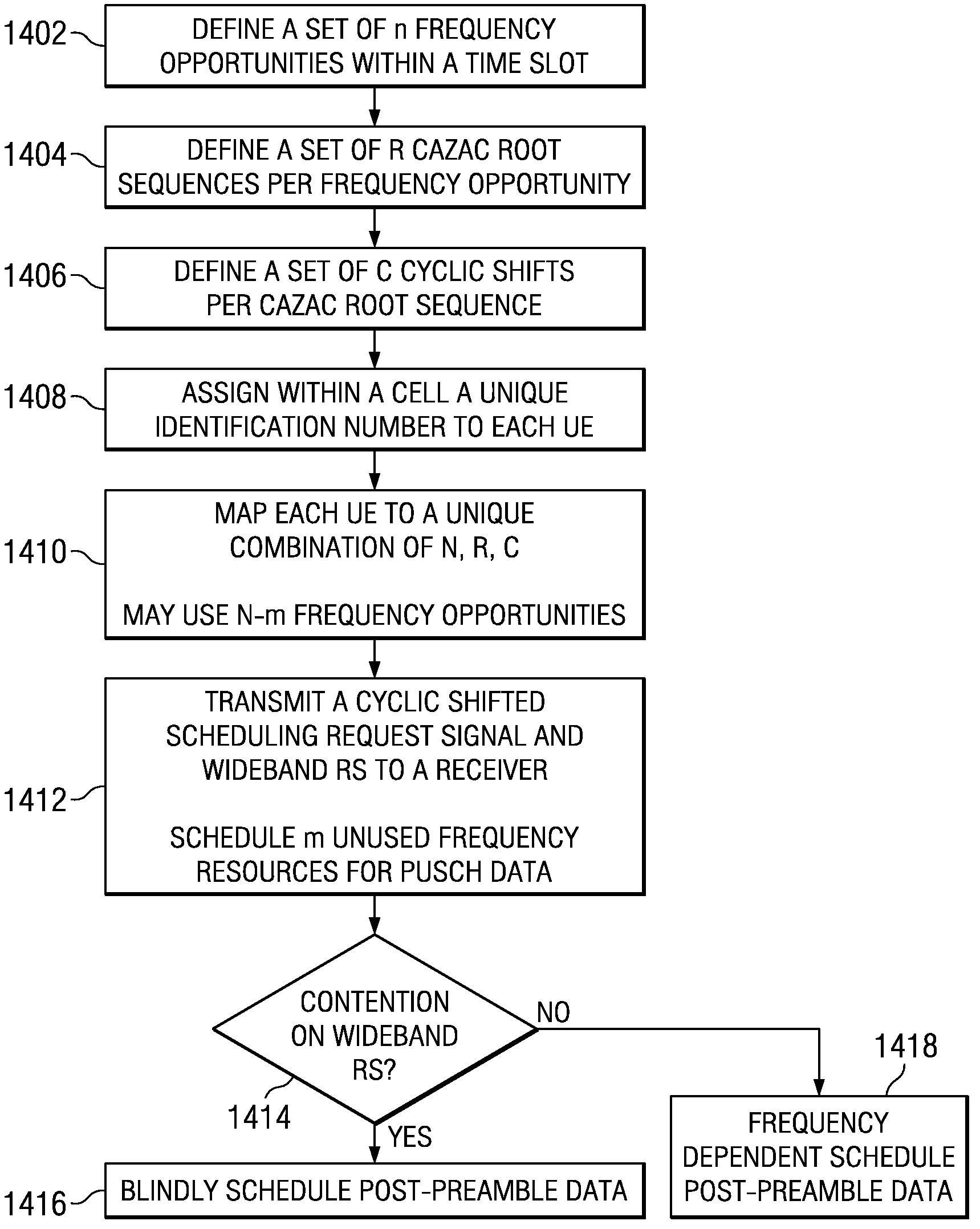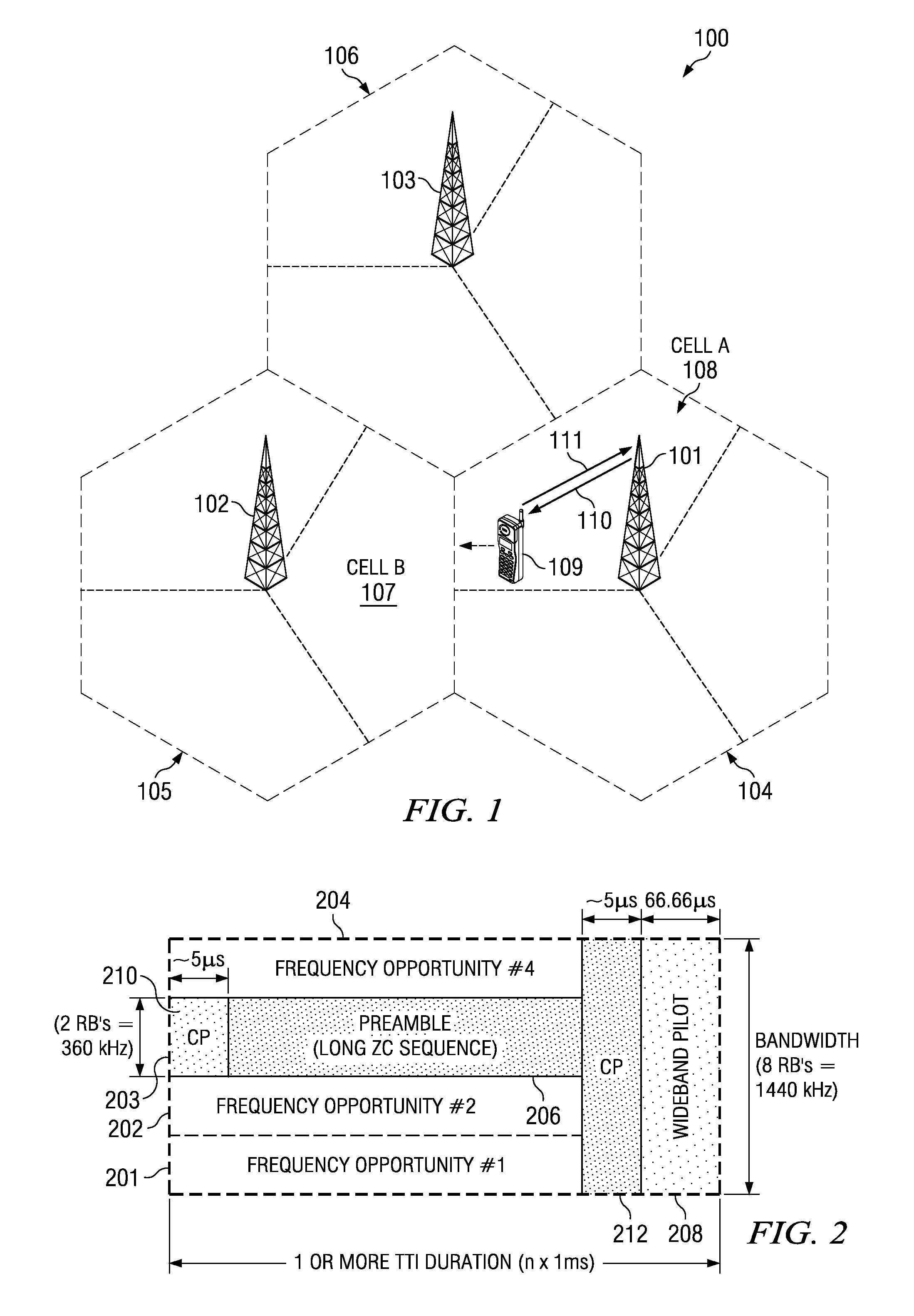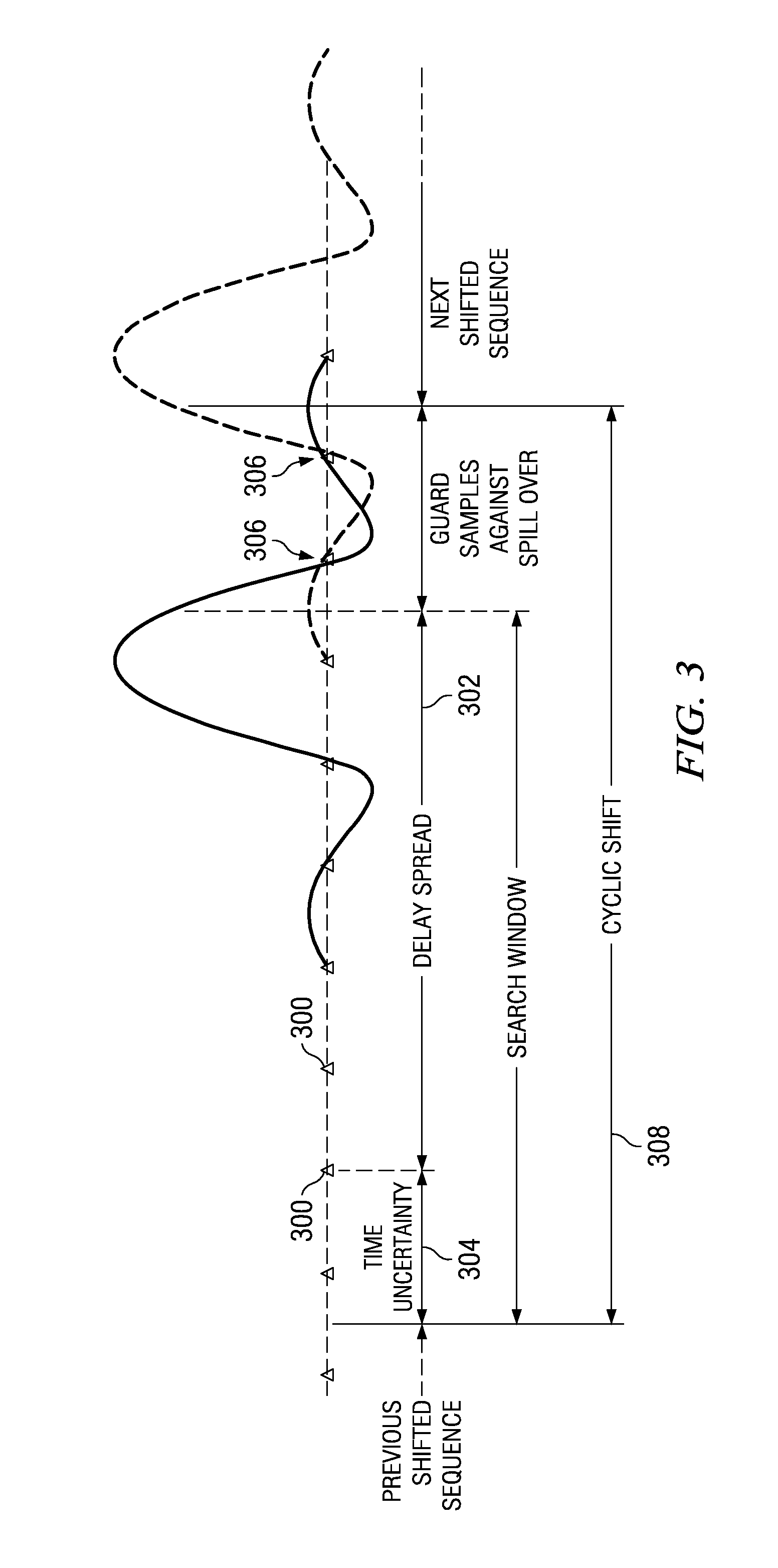Efficient scheduling request channel for wireless networks
a wireless network and request channel technology, applied in the field of efficient scheduling request channel for wireless networks, can solve the problems of inflexible radio resource allocation to the physical hsupa channel and the physical data channel, interference between signals from different users within the same cell, etc., to achieve fast and robustness, low overhead cost
- Summary
- Abstract
- Description
- Claims
- Application Information
AI Technical Summary
Benefits of technology
Problems solved by technology
Method used
Image
Examples
Embodiment Construction
[0037]Each user device in the uplink synchronized state is allocated uplink resources of a base-station and is assigned, on top of its radio resource control / medium access control (RRC / MAC) 16-bit identifier (C-RNTI), a unique uplink physical layer identifier to temporarily ensure non-contentious uplink transmissions via a shared communication channel or a scheduling request channel. The group of user devices in the uplink non-synchronized state are not assigned any additional physical layer identifier and thus the total number of bits needed for the uplink physical layer identifier in the uplink synchronized state can be reduced to improve efficiency of the control signaling scheme. In at least some embodiments, each user device in the uplink non-synchronized state cannot send uplink transmissions until successfully requesting uplink resources and uplink synchronization from the base-station. The uplink synchronized state is hereafter referred to as a “synchronized state” and the u...
PUM
 Login to View More
Login to View More Abstract
Description
Claims
Application Information
 Login to View More
Login to View More - R&D
- Intellectual Property
- Life Sciences
- Materials
- Tech Scout
- Unparalleled Data Quality
- Higher Quality Content
- 60% Fewer Hallucinations
Browse by: Latest US Patents, China's latest patents, Technical Efficacy Thesaurus, Application Domain, Technology Topic, Popular Technical Reports.
© 2025 PatSnap. All rights reserved.Legal|Privacy policy|Modern Slavery Act Transparency Statement|Sitemap|About US| Contact US: help@patsnap.com



